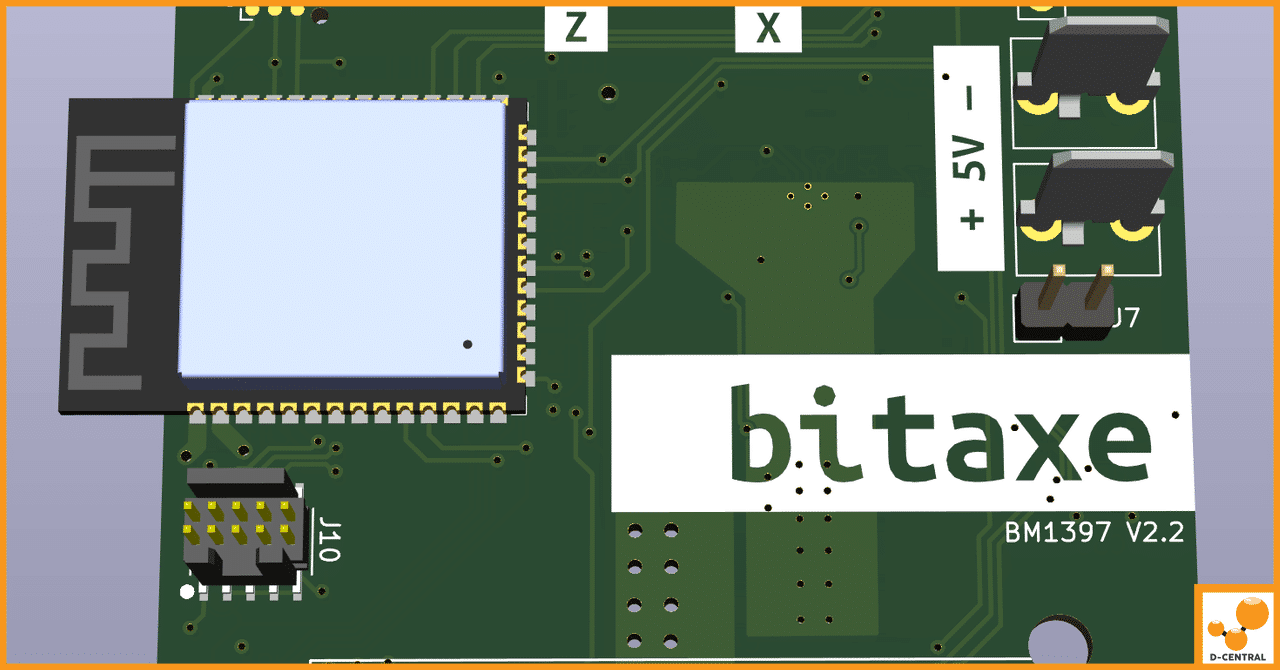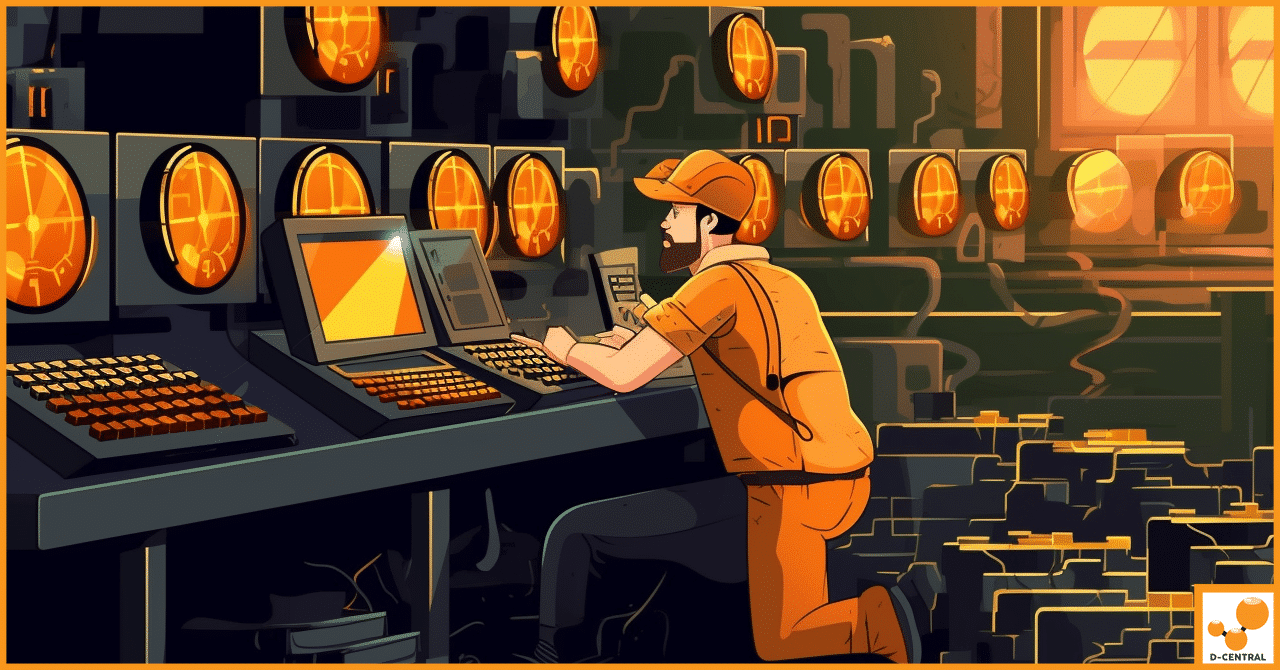The Comprehensive History and Evolution of Innosilicon’s Mining Hardware Offerings
In the dynamic world of cryptocurrency mining, Innosilicon stands out as a beacon of innovation and excellence. Founded in 2006,
4479 Desserte Nord Autoroute 440, Laval, QC H7P 6E2

Bitcoin mining is a crucial component of the Bitcoin network. It involves solving complex mathematical problems to validate transactions and add them to the blockchain, a public ledger of all Bitcoin transactions. This process requires powerful hardware that can perform these calculations quickly and efficiently. However, as the Bitcoin network grows and the mining difficulty increases, there is a growing need for more efficient and cost-effective mining hardware.
Enter Bitaxe, the first open-source hardware Bitcoin ASIC miner. This groundbreaking project is revolutionizing the Bitcoin mining landscape by providing an open-source, customizable, and efficient solution for Bitcoin mining. Bitaxe leverages the power of the Bitmain BM1397 ASICs, known for their efficiency in SHA256 hashing power. This not only contributes to the security of the Bitcoin network by supporting decentralization and diversity in the mining ecosystem but also offers a cost-effective solution for those interested in Bitcoin mining. Whether you’re a seasoned miner or a newcomer to the field, Bitaxe offers a unique opportunity to participate in the Bitcoin network.
Bitaxe stands out in the Bitcoin mining landscape due to its open-source nature. Being open-source means that the software and hardware designs of Bitaxe are publicly accessible. This transparency allows users to understand the workings of the miner fully, and even make modifications to suit their specific needs. This open-source ethos aligns with the decentralization principle of Bitcoin, promoting transparency, collaboration, and innovation. It also fosters a community of users who can contribute to the project, share their experiences, and provide support to each other.
At the heart of Bitaxe is the efficient BM1397 ASIC chip from Bitmain. ASIC, or Application-Specific Integrated Circuit, is a type of hardware that is designed to perform a specific task—in this case, Bitcoin mining. The BM1397 is known for its high hash rate and low power consumption, making it one of the most efficient ASIC chips for Bitcoin mining. This efficiency translates to lower operating costs and potentially higher profits for miners.
Bitaxe is not just efficient—it’s also versatile and user-friendly. It supports both solo and pool mining, allowing users to choose the mining approach that best suits their needs and preferences. The autotune feature allows for automatic adjustments of power, heat, and efficiency settings, optimizing the miner’s performance without requiring constant manual intervention.
Moreover, Bitaxe incorporates an ESP32-S3-WROOM-1 wifi microcontroller on board. This feature allows the miner to connect directly to the mining pool over WiFi, eliminating the need for an external computer. This not only simplifies the mining setup but also reduces the overall cost and energy consumption.
In summary, Bitaxe offers a unique combination of open-source transparency, mining efficiency, versatility, and user-friendliness. Whether you’re a seasoned miner or a newcomer to the field, Bitaxe provides a powerful tool to participate in Bitcoin mining.
D-Central Technologies proudly presents a comprehensive lineup of Bitaxe products. Whether you are a Bitcoin miner looking to build your own setup or searching for a compact and efficient mining solution, D-Central has got you covered. At the heart of the lineup is the Bitaxe v2.2 PCB, a main board that houses the powerful Bitmain BM1397 ASIC chip and other essential components. This PCB is designed with a strong emphasis on efficiency and versatility, supporting both solo and pool mining. With the integration of an ESP32-S3-WROOM-1 wifi microcontroller, the Bitaxe v2.2 PCB enables direct WiFi connectivity to mining pools, streamlining your mining experience. In addition, the Bitaxe v2.2 Chips and ICs Kit provides all the necessary chips and integrated circuits required for assembling your Bitaxe miner. This comprehensive kit includes the efficient BM1397 ASIC chip from Bitmain, ensuring optimal hashing power for Bitcoin mining. To further enhance your mining setup, the Bitaxe 4010 5V-3P Fan with Heatsink is available, playing a crucial role in maintaining the ideal operating temperature of your Bitaxe miner. This fan provides adequate airflow while the heatsink helps dissipate the heat generated by the ASIC chip, ensuring your miner operates at peak performance and efficiency while extending its lifespan. With D-Central Technologies and the Bitaxe product range, you can confidently pursue your Bitcoin mining goals with cutting-edge technology and reliable components.
Building and assembling a Bitaxe miner can be an exciting project, especially for those who enjoy hands-on work and learning about the inner workings of Bitcoin mining hardware. Here’s a step-by-step guide based on the instructions provided in the Bitaxe GitHub repository:
Here are some tips and best practices for building and assembling a Bitaxe miner:
By following these steps, tips, and best practices, you can successfully build and assemble your Bitaxe miner.
Bitcoin mining, while potentially profitable, comes with its own set of challenges and risks. The difficulty of mining increases over time as more miners join the network, requiring more computing power and electricity to maintain a competitive hash rate. This, coupled with the volatility of Bitcoin’s price, can make the profitability of mining uncertain.
When it comes to using Bitaxe, there are specific challenges and risks to consider. As an open-source project, Bitaxe is a work in progress. While this allows for continuous improvement and customization, it also means that the software or hardware may contain bugs or vulnerabilities that could affect its performance or security.
Assembling and operating the Bitaxe miner requires a certain level of technical skill and knowledge. The process can be complex, and mistakes could lead to hardware damage or suboptimal performance. Furthermore, while the Bitaxe community is a valuable resource, the lack of official support can make troubleshooting more challenging.
Compatibility issues may also arise, as some mining pools or software may not be designed to work with Bitaxe. It’s important to research and test your intended setup thoroughly to ensure compatibility.
Lastly, as with any investment, there’s a risk that the miner may not be as profitable as expected due to factors such as changes in Bitcoin’s price, increases in mining difficulty, or higher than expected operating costs.
Despite these challenges and risks, many users find that the benefits of Bitaxe—such as its efficiency, customization possibilities, and alignment with the ethos of decentralization—make it a worthwhile endeavor. As always, potential users should conduct thorough research and consider their risk tolerance before diving into Bitcoin mining with Bitaxe.
Configuring the Bitaxe software for optimal performance involves adjusting various settings to suit your specific mining goals and conditions. Here’s a guide on how to do it:
By carefully configuring your Bitaxe software, you can optimize your miner’s performance and potentially increase your Bitcoin mining profits. Remember, every mining setup is unique, so don’t be afraid to experiment with different settings to find what works best for you.
When using Bitaxe, you may encounter some common problems. Here are some troubleshooting tips to help you resolve these issues:
Remember, troubleshooting is a process of elimination. Start with the simplest solutions and work your way towards the more complex ones. If you’re still having trouble after trying these tips, don’t hesitate to reach out to the Bitaxe community for help. They’re a valuable resource and can provide additional insights and solutions.
If you need more information about Bitaxe or require help with any issues, there are several resources available.
The Bitaxe GitHub repository is the primary source of information about the project. Here, you can access the latest version of the Bitaxe software, as well as comprehensive documentation on the hardware and software components of the miner. The repository also includes detailed guides on building and assembling a Bitaxe miner, configuring the software for optimal performance, and troubleshooting common problems.
The “Issues” section of the GitHub repository is a valuable resource for getting help with problems. You can search for existing issues that match your problem or create a new issue if your problem hasn’t been addressed yet. When creating a new issue, be sure to provide as much detail as possible about your problem, including the steps to reproduce it, any error messages you received, and what you’ve tried so far to resolve it.
The Bitaxe community is another valuable resource. While there’s no official forum, you can find discussions about Bitaxe on various Bitcoin mining forums and social media platforms. These communities are filled with knowledgeable users who can provide advice, share their experiences, and help you troubleshoot problems.
Remember, the more you participate in these communities, the more you’ll get out of them. Don’t hesitate to ask questions, share your knowledge, and contribute to discussions. Not only will you learn more about Bitaxe and Bitcoin mining, but you’ll also help make the community a better resource for everyone.
Bitaxe, as the first open-source hardware Bitcoin ASIC miner, brings a unique and valuable contribution to the Bitcoin mining ecosystem. Its open-source nature promotes transparency, collaboration, and innovation, aligning with the decentralization ethos of Bitcoin. This allows users to fully understand the workings of their miner and even make modifications to suit their specific needs.
At the heart of Bitaxe is the efficient BM1397 ASIC chip from Bitmain, which provides a high hash rate and low power consumption. This efficiency translates into potential cost savings and higher profits for miners.
Bitaxe also offers a range of features that enhance the user experience, such as support for both solo and pool mining, autotune power/heat/efficiency settings, and an onboard WiFi microcontroller for direct connection to the mining pool.
Despite the challenges and risks associated with Bitcoin mining and using Bitaxe, many users find the benefits and potential rewards to be worth it. Whether you’re a seasoned miner or a newcomer to the field, Bitaxe offers a powerful tool to participate in the Bitcoin network.
In conclusion, Bitaxe is not just a Bitcoin miner—it’s a project that embodies the spirit of Bitcoin and the potential of open-source hardware. It’s a testament to what can be achieved when technology is made accessible and customizable, and it’s a promising development in the ever-evolving landscape of Bitcoin mining.
What is Open Source Miners United?
Open Source Miners United is a community-driven collective of innovative “mining hackers” who are building a variety of open-source mining devices. These devices, available for free or commercially, are set to disrupt the Bitcoin mining market.
What is the Bitaxe project?
The Bitaxe project is the first fully open-source hardware Bitcoin ASIC miner. It uses the efficient BM1397 ASIC chip from Bitmain and is a testament to the potential of community-driven hardware.
What is the potential of open-source hardware in Bitcoin mining?
Open-source hardware holds immense potential in Bitcoin mining. It allows for rapid iteration and improvement, as ideas can be shared freely and modifications can be made quickly. This can result in more efficient and effective mining hardware, which in turn can enhance the security and decentralization of the Bitcoin network.
What projects are currently being worked on by the community?
The community is currently working on a range of exciting projects. These include 1 chip miners, 6 chip miners, custom hashboards retrofit for S9 cases, and advanced schematics for a future PCI-E ASIC miner.
What is the role of the BM1397 chip in the Bitaxe project?
The BM1397 chip, produced by Bitmain, is the heart of the Bitaxe miner. It’s an Application-Specific Integrated Circuit (ASIC) designed specifically for Bitcoin mining. It’s known for its high efficiency and economic viability, making it an ideal choice for the Bitaxe project.
What services does D-Central Technologies Inc offer?
D-Central Technologies Inc offers a comprehensive range of services tailored to the needs of Bitcoin miners. These include consultation, sourcing of mining hardware, hosting mining operations, ASIC repairs, maintenance training, and comprehensive mining support and outsourcing solutions.
How can I join the Bitaxe revolution?
You can join the Bitaxe revolution by reaching out to D-Central Technologies Inc. They offer a range of services to help you get involved in Bitcoin mining and are committed to supporting the Bitaxe project and the Open Source Miners United movement.
DISCLAIMER: D-Central Technologies and its associated content, including this blog, do not serve as financial advisors or official investment advisors. The insights and opinions shared here or by any guests featured in our content are provided purely for informational and educational purposes. Such communications should not be interpreted as financial, investment, legal, tax, or any form of specific advice. We are committed to advancing the knowledge and understanding of Bitcoin and its potential impact on society. However, we urge our community to proceed with caution and informed judgment in all related endeavors.
Related Posts
In the dynamic world of cryptocurrency mining, Innosilicon stands out as a beacon of innovation and excellence. Founded in 2006,

Bitcoin mining is a process in which powerful computers, known as miners, work together to solve complex mathematical problems. This

Bitcoin mining plays a vital role in maintaining the Bitcoin network by validating and adding transactions to the blockchain. Miners